Common Swamp Wallaby-grass
Back | Salinity Indicator Plants Home | Common name home | Scientific name home | Photo Gallery | Glossary
| Common Swamp Wallaby-grass photos | Family Name: Grass (Poaceae syn. Gramineae) |
| Scientific Name: | Amphibromus nervosus | 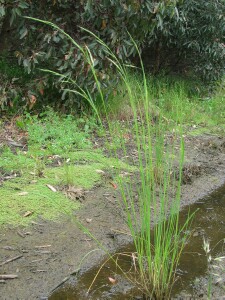 Common Swamp Wallaby-grass plant Photo: A J Brown |
Status: | Native to Western Australia, South Australia, New South Wales and Victoria. | |
Plant Description: | A tufted perennial grass, growing to 1.2 m tall. It has smooth, hairless leaves with flat or inrolled blades, to 30 cm long and 1.5-3.5 mm wide. Flower-heads are slender, erect panicles with 4-6 flowered, green, spikelets, 10-16 mm long (excluding awns). Floret lemma is 5-7.2 mm long with 2-4 minute apical teeth and a 12-22 mm long awn or bristle arising from the middle third of the lemma back. Late in the season, it is common to find the florets dropped and only the outer glumes of the spikelets remaining. | |
Habitat: | Occurs in freshwater swamps and drains, across most of Victoria. | |
Comments: | There are eight Swamp Wallaby-grass species in Victoria and all inhabit similar freshwater habitats. They are largely distinguished by the shape of their florets. The most other common species is Swamp Wallaby-grass (Amphibromus neesii) which has a floret awn attached in the upper third of the lemma back and a lemma that tapers abruptly towards its tip thereafter. Might be confused with Australian Sweet-grass (Glyceria australis) which grows in similar habitat but does not have toothed or awned lemmas. |
Common Swamp Wallaby-gass photos
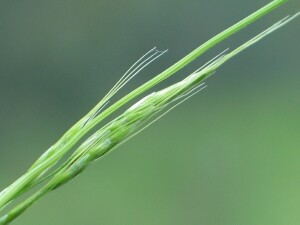 Young spikelets of Common Swamp Wallaby-grass Photo: A J Brown | 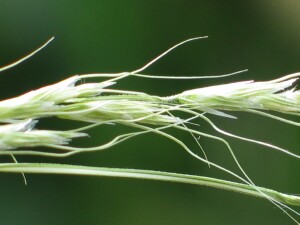 Mature spikelets of Common Swamp Wallaby-grass Photo: A J Brown |
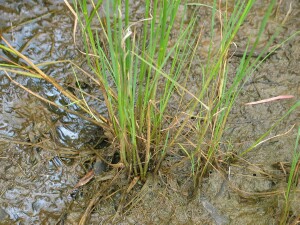 Base and leaves of Common Swamp Wallaby-grass Photo: A J Brown | 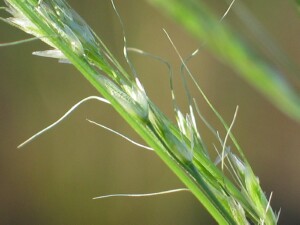 Mature spikelets of Common Swamp Wallaby-grass Photo: A J Brown |
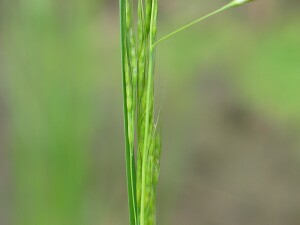 Young flower-head of Common Swamp Wallaby-grass Photo: A J Brown | 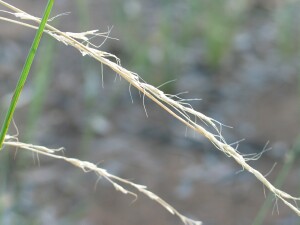 Old spikelets of Common Swamp Wallaby-grass Photo: A J Brown |
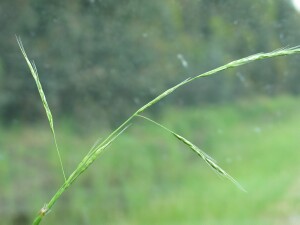 Spreading flower-head of Common Swamp Wallaby-grass Photo: A J Brown |


